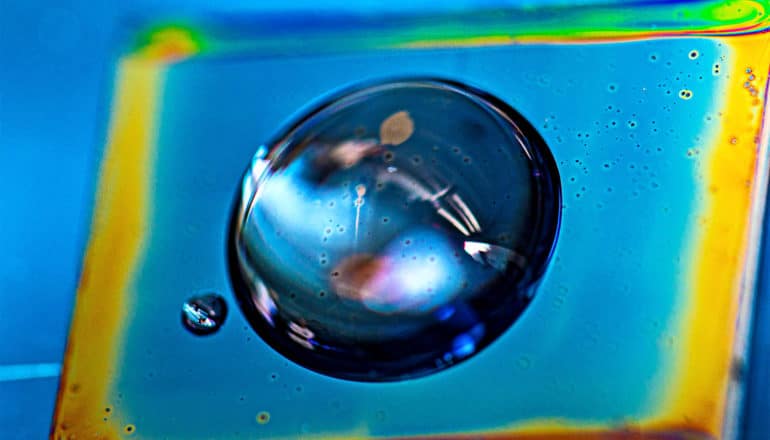
Microscopic “bottlebrush” polymers that look like the common kitchen implement could offer exquisite control over coatings, researchers say.
Rafael Verduzco, a chemical and biomolecular engineer at Rice University’s Brown School of Engineering, has long studied bottlebrush copolymers. Now, he and colleagues have developed models and methods to refine surface coatings to make them, for instance, more waterproof or more conductive.
The researchers discovered that bottlebrushes mixed with linear polymers tend to migrate to the top and bottom of a thin film as it dries. These films, as coatings, are ubiquitous in products—as waterproof layers to keep metals from rusting or fabrics from staining.
When the migration happens, the linear polymers hold the center while the bottlebrushes are drawn to the air above or the substrate below. This effectively decouples the properties of the bulk coating from its exposed surfaces, Verduzco says.
Computational models and experiments showed that variations in the bottlebrush itself could control surface characteristics.
Never-ending uses for bottlebrush polymers
Bottlebrush polymers remain challenging to make in bulk, but their potential uses are vast, Verduzco says. Applications could include drug delivery via functionalized bottlebrushes that form micelles, lubricants, soft elastomers, anti-fouling filters, and surfaces that heal themselves.
The researchers characterized various bottlebrushes made of polystyrene and poly(methyl methacrylate) (aka PMMA) while studying what causes the polymers to migrate.
Resembling their macro kitchen cousins (as well as certain flowers), bottlebrushes consist of small polymer chains that radiate outward from a linear polymer rod. The bottlebrushes self-assemble in a solution, which researchers can manipulate to adjust their properties.
Coatings are everywhere
Coatings are ubiquitous, Verduzco says. “If we didn’t have the right coatings, our materials would degrade quickly,” he says. “They would react in ways we don’t want them to. So coating a surface is usually a separate process; you make something and then you have to find a way to deposit a coating on top of it.
“What we’re looking at is a kind of universal additive, a molecule you can blend with whatever you’re making that will spontaneously go to the surface or the interface,” he says. “That’s how we ended up using bottlebrushes.”
Researchers can tune bottlebrushes by varying the number of side chains, their length, or the length of the backbone polymer, Verduzco says. The side chains themselves can be of mixed type, and small molecules or proteins can be added to their end groups.
“The chemistry of these materials is advanced sufficiently that you can pretty much put just about any kind of polymer as one of these bristles on the side chain,” he says. “You can put them in different order.”
The study is published in the journal Macromolecules. Additional coauthors are from the University of Tennessee, Knoxville; Oak Ridge National Laboratory; and the University of Houston.
Source: Rice University
The post ‘Bottlebrush’ polymers bring coatings under control appeared first on Futurity.
from Futurity https://ift.tt/2XfsV6p
No comments:
Post a Comment